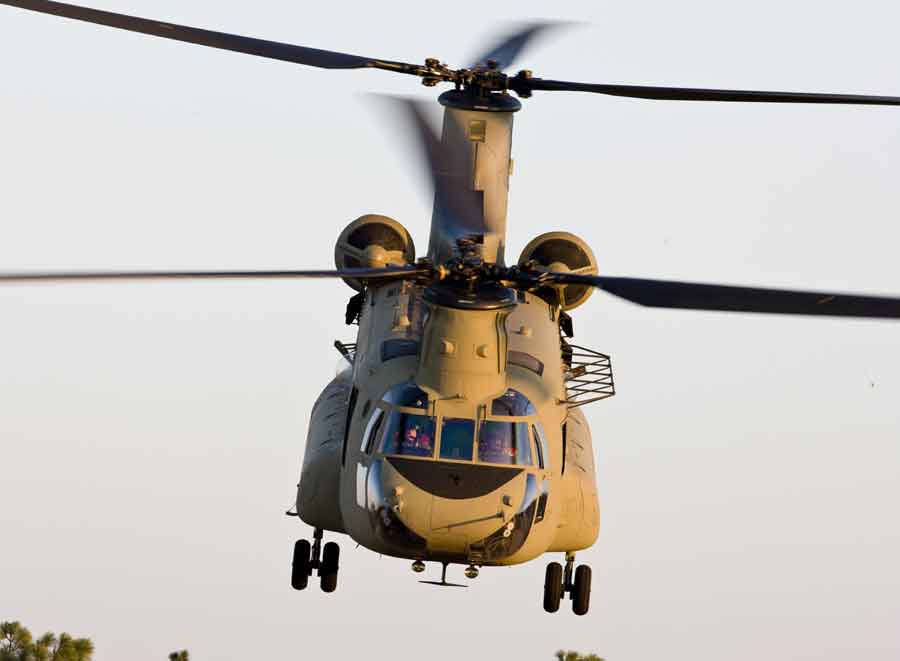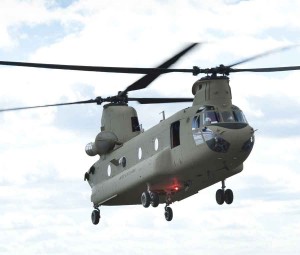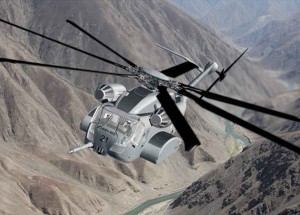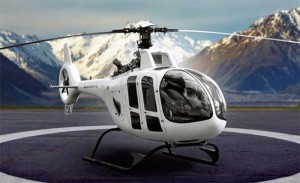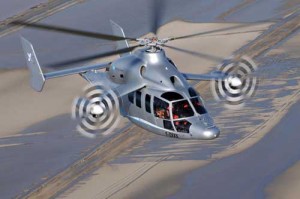Technological advances have brought impressive improvements in rotorcraft technology albeit without eliminating the intrinsic limitations. The classic helicopter design has been mutated into newer types of rotorcraft or hybrid VTOL ones. Nonetheless, the majority of helicopters retain the original tadpole-like shape with a main rotor and a tail rotor. Designers all over the world are persistently and continually seeking breakthroughs to achieve incremental performance parameters. Advances in high technology regimes continue to provide slow but steady support.
Size has always been a laudable and desirable criterion for any craft…
The term ‘pecking order’, so visibly manifest in chickens, supposedly owes its origin to the Red Jungle Fowl of Thailand that evolved it as an aid to survival. It ensured that, when limited food was available, there were no fights over food which could attract attention of predators to the flock. In the technological marvels of the 20th century, fowl created from metals and alloys have displayed a similar, apparent ‘social’ demeanour wherein resources have been served up to the stronger of the flying machines. Thus, fixed wing combat aircraft with higher speeds and offensive roles have usurped a slot higher in the pecking order than slower, less potent, ground hugging ones, the helicopters.
Witness the fact that the first production helicopter, the Sikorsky R-4 in 1942, came over three decades after the first mass produced fixed-wing aircraft the Wright Model B in 1910. That is not to say that the potential of rotary wing flight was not recognised early. Indeed, US National Aeronautics and Space Administration (NASA) has had its Langley Research Centre in Hampton since 1917, where it has been carrying out research on helicopters and other vertical flight aircraft for almost a century. The Centre was recently named the Vertical Flight Heritage Site by the American Helicopter Society International (AHSI), the world’s only international society for engineers, scientists and others working on vertical flight technology. However, traditionally, fixed-wing R&D has arrogated a larger share of the funding pie than the rotary wing domain.
The aviation enthusiast, civil or military, tends to the predisposition that helicopter performance has reached a plateau and that future developments are unlikely to demonstrate spectacular advances in speed, performance or design. While fixed wing advances may be dramatically projected through the fifth-generation F22 Raptor with several others said to be under development, progressions on the rotary wing front are also worthy of attention, certainly more than they receive now.
The heavier the helicopter, the more restricted its operational envelope…
Design Dynamics
At the beginning of World War II, Igor Sikorsky flew the Vought-Sikorsky VS-300. Its modified version, the Sikorsky R4 became the world’s first mass-produced helicopter in 1942 and saw limited employment during the War. A look at a picture of the R4 will confirm that basic helicopter profile has more or less remained the same over seven decades although design and capability have struggled to keep up with mission and role requirements. Design R&D endeavours have continually addressed the inherent imperfections of the helicopter, the prominent ones being restricted payload, poor performance, limited speed, excessive noise, high vibration levels, high vulnerability and low survivability.
The 1920s saw significant changes in helicopter design with application of aerodynamic theory to rotor systems, availability of high power-to-weight ratio aero engines capable of supporting vertical flight and lowered cost of aluminium alloys for light-weight airframes. Initial challenges to helicopter design were counteracting main rotor torque reaction, providing safe levels of stability and control and reducing vibrations to acceptable levels. Once these had been tackled, rotorcraft design graduated to higher levels of sophistication and evolved from the original single main rotor to tandem rotors, synchropter (intermeshing rotors), co-axial rotors, tip-jet driven rotorcraft, No Tail Rotor (NOTAR), tilt-wing aircraft, tilt-rotor aircraft and compound helicopters.
Big is Beautiful
Size has always been a laudable and desirable criterion for any craft. The largest helicopter ever flown was the V12, built in late 1960s by the Mil Moscow Helicopter Plant. The company merged with Kamov and Rostvertol to form Oboronprom Corporation in 2006. The helicopter had a Maximum Takeoff Weight (MTOW) of 105 tonnes. Only two prototypes were built, but they still hold four current world records for payload/altitude combinations. The Mil Mi-26, with an MTOW of 56 tonnes is the largest, heaviest and most powerful helicopter to go into series production. While the Mi-26 had a unique design with a single disc having an eight-blade rotor, the closest Western heavy-lift helicopter is the CH 53 Super Stallion (MTOW 33.3 tonnes) followed by CH47 Chinook (MTOW 22.7 tonnes). The CH53 has a seven-blade rotor and the CH47 has a tandem rotor system.
The foregoing figures have been mentioned to assert that, as far as designer’s skill and operator’s ambition are concerned, big can keep becoming bigger. However, the heavier the helicopter, the more restricted its operational envelope including the ground infrastructure and helipad size. As an illustration, a Chinook being operated by US 160th Special Operations Aviation Regiment was stranded at 2,600 metres in Afghanistan; stripped of fuel, rotors and all non-essentials, it weighed an estimated 12 tonnes. As the largest US helicopter, the Super Stallion could carry only nine tonnes at that altitude, a civilian Mi26 was leased and the Chinook airlifted to Bagram Air Base. India has used the Mi26 in the past and is in the process of procuring the Chinook.
The helicopter is a complex machine which uses a substantial part of the lift its rotor system generates to just stay away from the ground…
As an aside, Russian Helicopters and Aviation Industry Corporation of China (AVIC) have signed a framework agreement to work together on creating an Advanced Heavy Lift (AHL) with take-off weight of 38 tonnes and the capability to carry ten tonnes of cargo inside the cabin or 15 tonnes under-slung. The helicopter will be designed to operate round-the-clock in hot climates, mountainous terrain and all weather conditions and will be able to fly a highly varied range of missions.
Material
The helicopter is a complex machine which uses a substantial part of the lift its rotor system generates to just stay away from the ground even when not using its engine power to move from one place to another. Thus weight becomes a crucial design factor. Interestingly, the first flying aircraft of the Wright Brothers had a wooden airframe, but the engine crankcase was made of aluminium to keep weight down. Aluminium gradually replaced wood, steel and other parts in the early 1900s and the first all-aluminium plane was built in the early 1920s. Since then, aluminium alloys have become critical to airframe manufacture and today represent about 80 per cent of a typical helicopter airframe.
With significant advances in carbon composites, lighter weight with ever increasing strength has become possible and every helicopter manufacturer is increasingly eyeing carbon composites although the cost factor has bridled that trend a bit. New Zealand’s Composite Helicopters International has been developing the KC518 Adventourer, an all-composite, frameless, six-seat helicopter constructed from Carbon and Kevlar using EvoStrength technology. It is the world’s first helicopter with a monocoque fuselage made entirely from composite materials and is a change from the use of aluminium and steel tube framing used in helicopter manufacture.
As a single piece composite structure, there are no rivets or bolts used in the assembly with the result that there is substantial resistance to corrosion, fatigue and impact. A possible threat to the programme, a recent accident where the prototype pitched up and rolled on its side during an emergency landing, was converted into an opportunity for promotion by the company. The company President Peter Maloney was quoted as saying, “Though the accident was unfortunate, we are impressed by the strength of the carbon-Kevlar composite fuselage which withstood the force of impact when landing. It was the unique composite structure of the helicopter that saved us from serious injury.”
The single major limitation of a helicopter is its forward speed…
Need for Speed
The single major limitation of a helicopter is its forward speed. It would be stating the obvious that a faster helicopter would be more desirable and designers have indeed been fervently working towards helicopters that can fly faster. While the drag reduction logic applicable to fixed-wing airframes apply to a large degree to a helicopter, there is an insurmountable problem associated with the rotor disc.
The geometry of a typical helicopter rotor has the inherent aerodynamic challenge with the rotor system which increases with forward speed. During hover, all the rotors travel at a velocity determined by the length of the blade and the Revolutions Per Minute (RPM). However, as the helicopter moves forward, the velocity of the blades relative to the air depends on the velocity of the helicopter as well as the rotor speed. The airspeed of the advancing rotor blade is much higher than that of the helicopter itself and it tends to approach the speed of sound with resultant increased drag and vibration. Also, because the advancing blade has higher velocity than the retreating blade, there is a asymmetry of lift between the two, rotor blades are designed to ‘flap’ i.e. lift and twist in such a way that the advancing blade flaps up and develops a smaller angle of attack. Conversely, the retreating blade flaps down, develops a higher angle of attack and generates more lift.
At high speeds, the force on the rotors is such that they ‘flap’ excessively and the retreating blade can reach too high an angle and stall. The forward speed is thus limited and any endeavour to go beyond around 130 knots, involves special materials and technologies. In a tandem rotor system, like the Chinook, the effect of retreating blade lift asymmetry on one rotor is countered to some extent by the other, but not wholly.
The leaders in the race for faster helicopters are the Sikorsky X2 and the Eurocopter X3. Reportedly, in June 2013, the X3 broke the X2 records for level flight and dive speed, recording 255 knots and 263 knots respectively. However, it may be mentioned that both X2 and X3 are technology demonstrators and are not designed as classic helicopters. The X3 has stub wings fitted with a tractor propeller at each tip. The differential propeller pitch counters the torque effect of the main rotor.
The traditional helicopter design would not quench operators’ thirst for higher speeds and better performance…
The X2, on the other hand, uses co-axial rotors with a pusher propeller at the tail. The X2 and X3 records are unofficial as they are not recognised by World Air Sports Federation which recognises a 1986 record of 249 knots set by a Westland Lynx demonstrator. Russia is also reportedly working on a high speed design with a target of bettering 249 knots. The prototype based on a Mi24 airframe is expected to be ready to fly by 2020 and a flying laboratory is expected to be set up by end-2015 under the programme named Perspectivny Skorostnoy Vertolyot (PSV) or advanced high-speed helicopter.
It is worth a mention here that the marginal increase of speed that rival companies are so assiduously working to achieve is essentially a public relations exercise and comes at enormous cost. Thus, while breaking speed records is one thing, finding civil or military operators willing to pay very high costs to get a few extra knots may be very difficult. Witness the announcement of Eurocopter X4 in 2011 which has now been unveiled as Airbus H160. While the X4 nomenclature indicated a progression beyond X3, the H160, with a cruising speed of 160 knots, has no pretensions to record breaking speeds.
Vertical Take Off and Landing (VTOL)
From the foregoing, it would be obvious that the traditional helicopter design would not quench operators’ thirst for higher speeds and better performance. The basic design has other limitations as well. The rotor system is not as efficient for forward travel as a fixed-wing one, uses more fuel and requires more maintenance. It consumes approximately 15 per cent of its total power available to run the essential tail anti-torque rotor just to keep the helicopter from spinning. The helicopter must also deal with high vibration levels.




